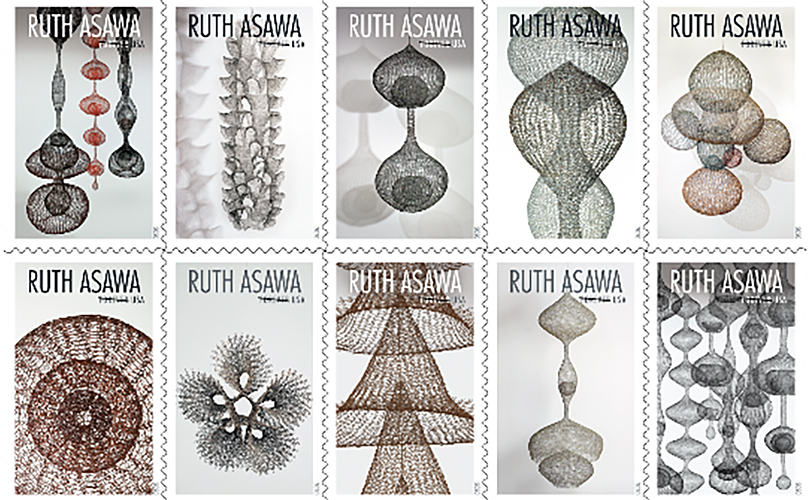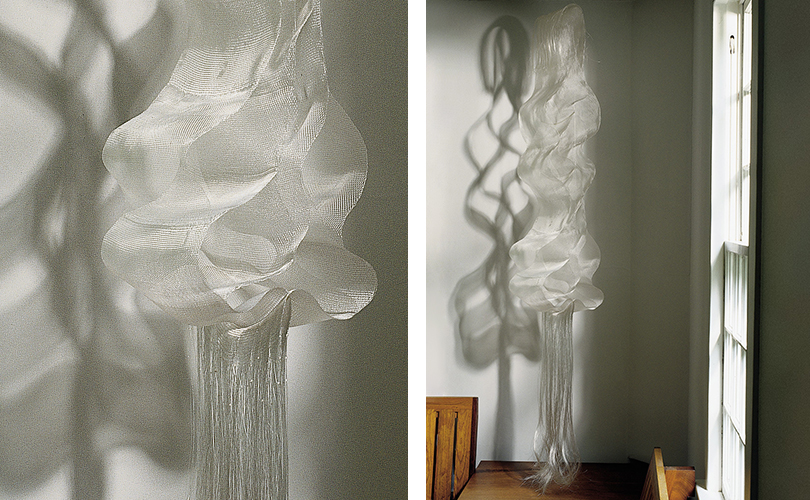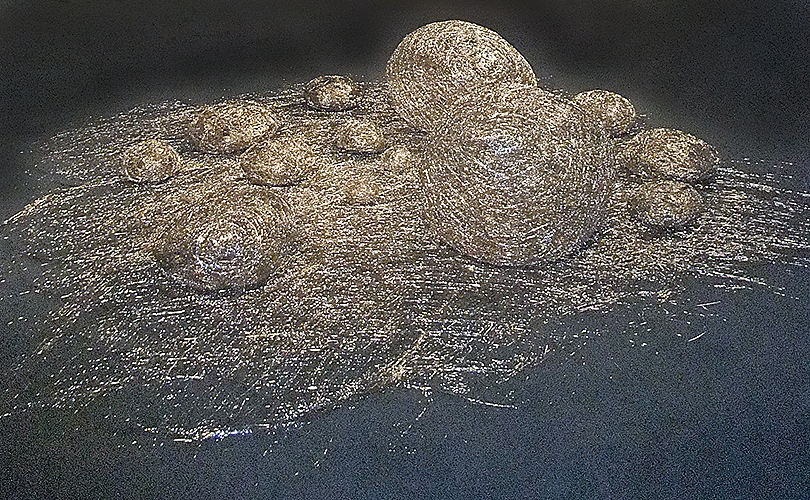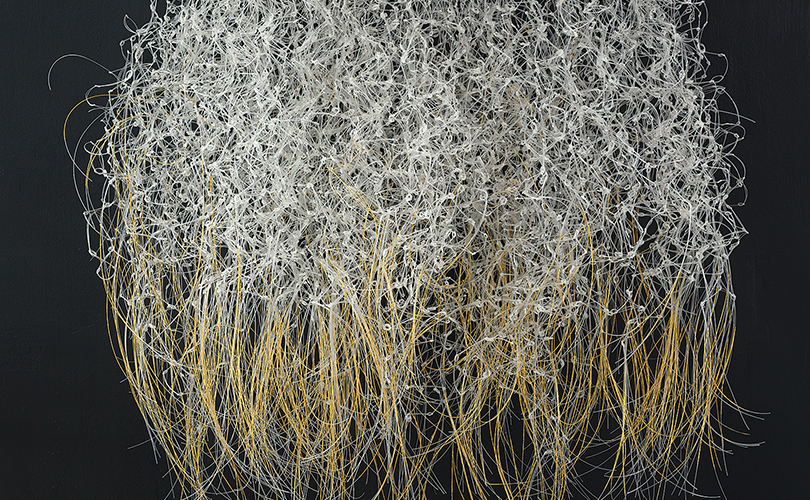This year has seen the opening of a magical retrospective of Ruth Asawa’s ethereal work at the San Francisco Museum of Modern Art, through September 2, 2025. Asawa(1926 -2013) has newly captivated art audiences since 2020, when the US Postal Service created a Forever Stamp in her honor. The stamps were elegant and popular and led to considerable attention for the artist. A National Medal of Arts and numerous solo exhibitions followed, including Ruth Asawa Through Line at the Whitney Museum of American Art followed. In 2022, her biomorphic wire forms were showcased in The Milk of Dreams at the 59th Venice Biennial.

Acknowledging Asawa’s attraction, Artsy recently complied 6 Artists to Follow If You Like Ruth Asawa (Artsy, Tara Anne Dalbow, Apr 2, 2025). The list includes Chiaru Shiota, Naomi Wanjiku Gakunga, Gertrud Hals, Marci Chevali, Nnenna Okore, and Mari Andrews. Like Asawa’s, these artists’ work reflect natural forms like snail shells, insect wings, and spider webs, and is “characterized by a sense of levity that defies common perceptions of weight and gravity.”
Not surprisingly. browngrotta arts has its own list — four more artists to follow if you admire Asawa:

First, Asawa’s contemporary, Kay Sekimachi (b. 1926). Kay Sekimachi is best known for her ethereal monofilament sculptures. The series began in 1963 as an experiment to weave a wall hanging in multiple, translucent layers. After weaving a linen sample, Sekimachi realized she could produce three-dimensional forms using Dupont’s recently introduced nylon monofilament material. Sekimachi wove her monofilament sculptures as flat, interlocking layers that when suspended, folded-out into organic forms that she named after natural phenomena. Ogawa II, on display here, translates from Japanese to “little river” or “stream.”

Similarly evocative, though differently executed, are Shoko Fukuda’s undulating sculptures of white ramie. Shoko Fukuda is a basketmaker and Japanese artist who has exhibited her work internationally for the past 10 years. Fukuda currently works as an instructor at Kobe Design University in the Fashion Design department. Fukuda is interested in “distortion” as a characteristic of basket weaving. “As I coil the thread around the core and shape it while holding the layers together, I look for the cause of distortion in the nature of the material, the direction of work and the angle of layers to effectively incorporate these elements into my work. The elasticity and shape of the core significantly affect the weaving process, as the thread constantly holds back the force of the core trying to bounce back outward.” By selecting materials and methods for weaving with the natural distortion in mind, Fukuda saw the possibility of developing twists and turns. “I find it interesting to see my intentions and the laws of nature influencing each other to create forms.” Connected Contours VII evokes forms from nature. Fukuda imagined a structure resembling a bird spreading its wings and constructed the form based on this concept. By connecting parts of the contours, she says, “the individual shapes retain their inherent twisted forms and natural movement, while the overall structure is designed to achieve harmony.”

Working in metal, like Asawa, is Kyoko Kumai. She weaves thin metal wires together to make a textile which she uses as a means of expression to explore various aspects of wind, air, and light. The walls, or carpets, or rooms of shimmery filaments she creates are revelatory. Kumai has had 67 solo exhibitions since 1983, including exhibiting Air at the Museum of Modern Art’s Project Space in 1991. Roberta Smith wrote in The New York Times that the stainless steel Kumai used in Air “is eminently industrial” … “Yet the same qualities that make Miss Kumai’s work seem contemporary and Western are also quintessentially Japanese: foremost is its obvious faith in the power of beautiful materials handled simply but creatively and in unexpected ways.” Smith concluded that Kumai’s work was one of the strongest works of Japanese art to be shown in New York in some time.” (Roberta Smith, “Review/Art; A Weaving of Stainless-Steel Thread,” The New York Times, May 10, 1991.)

Working in monofilament, like Kay Sekimachi, but with differing results, was Yvonne Pacanovsky Bobrowicz (1928 – 2022). An awarding-winning artist, Bobrowicz was known for her cascading, light-transmitting sculptures made of synthetic monofilament. Bobrowicz was concerned with interconnections — interconnectedness and continuum. The artist told the Senior Artists Initiative in Philadelphia in 2003, “My work has been combining natural materials with synthetics, relating opposites, randomness and order — dark, light, reflective, opaque, and light absorbent, incorporating gold leaf, reflecting sculptures of monofilament, reflective and alchemically symbolic — unifying them in a variety of densities, scale, and configurations.” Bobrowicz studied with Marianne Strengell at the Cranbook Academy of Art and with Anni Albers at the Philadelphia Museum and School of Industrial Art, now University of the Arts. In the 1980s, she collaborated with renowned architect Louis Kahn. Like Sekimachi, Bobrowicz’s mesmerizing work captivated audiences with its light-transmitting qualities. Images of several of her works can be found online at the Sapir Contemporary Gallery website.
